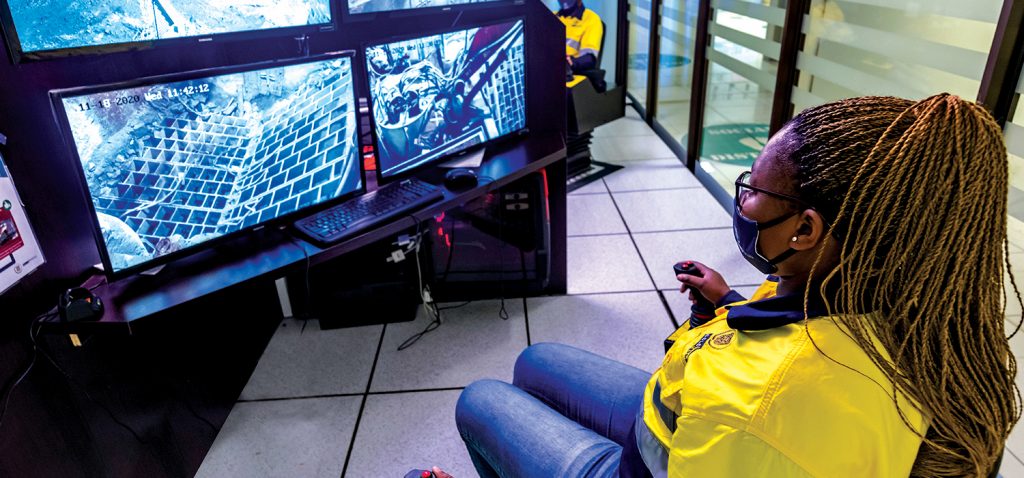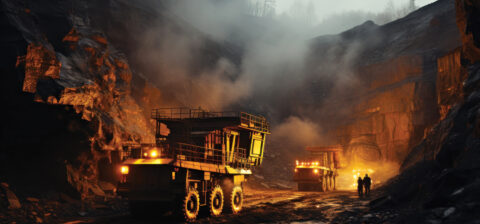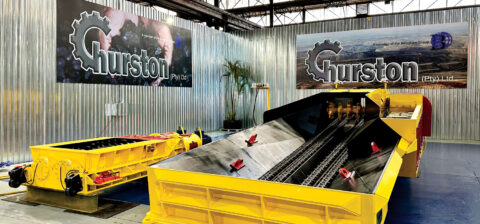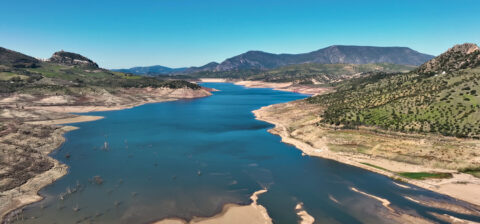SA Mining
Celebrating Women In Mining
Each year in August, South Africa marks Women’s Month – celebrating the strength and resilience of women and their contributions to society and country. SA Mining recently spoke to Dr Thuthula Balfour, head: health at the Minerals Council South Africa, to find out how the mining industry is faring in its transformation agenda.
Is industry meeting the Mining Charter’s targets for transformation, in particular as related to women in mining?
There are two ways of looking at this. The first is to look at whether or not the industry has met the Mining Charter targets, or – as we prefer to do – look at what we are trying to achieve as an industry in respect of women in mining, and how we are doing against the stretch targets we have put in place.
In terms of compliance with the Mining Charter, we can report that by the end of 2018 the number of women working in the mining sector had increased significantly – from around 11 400 in 2002, to 57 000 (or around 12%) in 2018. In 2018, women represented 17% of top management, 17% of senior management, 24% of professionally qualified people and 18% of skilled and technical professions.
On this measure we have made good progress, but there is of course room for more.
If you look at the issue of women in mining in a more holistic way, however, we would see this differently.
First, if we were to ask whether the issue of women in mining is firmly on the agenda of every mining company at the most senior levels of the industry, the answer would be yes.
Addressing gender imbalances and creating workplaces that are fair and safe for men and women have long been a focus of the Minerals Council.
Through the Women in Mining Leadership Forum, led by Minerals Council president Nolitha Fakude and former office bearer Sibanye-Stillwater CEO Neal Froneman, the Minerals Council placed the advancement of women firmly on the agenda.
Seven clear workstreams with action plans for each are in place:
- Reaffirm zero tolerance for gender-based violence through the Stop Abuse campaign.
- Develop gender diversity and inclusion policies.
- Provide a reporting system for gender diversity issues.
- Initiate unconscious bias training to transform culture.
- Deploy an ongoing company-wide pulse check survey.
- Build an inclusive physical environment.
- Supply personal protective equipment for women specifically.
Minerals Council members set and agreed to stretch targets aimed at ensuring that the industry at least doubles the percentage of women in mining by 2025 and ultimately works towards 30% to 40% women’s representation across the industry and 50% in management over the next decade.
What kind of impact has COVID-19 had on the journey to meeting these targets?
We don’t have specific evidence of this, but from what we do know there is an indirect impact. Firstly we know that worldwide, the burden of childcare and caring for the elderly and sick, especially during lockdowns, and job losses, have disproportionately affected women. We have no reason to believe that our industry would be any different.
Fortunately, most mining companies were able to pay their employees during this time, but we can only assume that there has been an impact at the level of the household.
Secondly, we know that globally and in South Africa too, lockdowns have meant an increase in femicide and gender-based violence.
Many Minerals Council members already have policies and systems in place to address sexual harassment and violence in the workplace. However the Stop Abuse of Women campaign, which forms part of our Women in Mining Strategy, aims to ensure that the right processes and mechanisms are in place to identify and deal with the physical and mental abuse of women.
It also aims to ensure we continue to train and educate men and women on what abuse means, and to provide support to women in mining and mining communities.
Thirdly, to be able to achieve our ambitious transformation targets we need the industry to be thriving – with new investment and job creation. Mining has fared better than most, but it has still been affected.
Is transformation in mining encompassing remuneration?
Closing the gender pay gap is one of the aspects the industry is looking at to promote gender diversity and inclusion at all levels within the workplace. We don’t have evidence of this at this stage, but will certainly be monitoring this in the future.
How comparable is transformation in mining to other sectors locally and globally?
Lack of diversity is a challenge in boardrooms, and at a senior level the world over. But we are making good progress.
A recent analysis of our members showed that currently there are 13 member companies that have woman CEOs or board chairs. Is that enough? Absolutely not. But it would be interesting to reflect on this comparison with other sectors of the South African economy, especially when you consider that some of these companies are world-leading.
It is true that the mining industry lags behind other sectors in the country and other mining jurisdictions such as Australia and Canada where women represent 17% and 16% respectively in the workplace.
Mining has traditionally been a male-dominated environment. Superstition and patriarchal beliefs have delayed an acceptance of women in this space, and infrastructure, equipment and the physically demanding environment serve as further barriers to entry for women in mining.
We need to develop and recruit woman engineers into the industry (and to do that we need to have a thriving, growing industry). Attracting women into mining faculties at universities and getting them to succeed academically is not the problem. But getting them to come and work for mining companies, and not for the more lucrative and currently attractive financial services sector, once they graduate is a challenge.
What are some of the challenges faced in meeting the transformation agenda?
From a mining perspective, we have specific challenges that are unique to our mining environment and that relate to women in the workplace.
The outcome of a survey conducted by the Minerals Council among members indicated that the most common physical challenges are physical capacity, pregnancy and maternity leave, and workplaces not accommodating the needs of women (such as through sanitation and ablution facilities, safety and security, and childcare facilities).
One of the biggest concerns facing women who work underground is safety, specifically the risk of sexual harassment and violence directed at them by their male colleagues and illegal miners. Underground conditions such as crowded conveyances, poorly lit tunnels and working areas, and other women in their direct proximity all make working underground more difficult for women.
South Africa has some of the deepest mines in the world (gold and platinum in particular) which are historically labour-intensive, requiring arduous work under challenging conditions.
In general terms, most women don’t have the same physical strength as most men, which has a material impact on their ability to undertake underground work effectively.
Almost every woman who is physically able to work underground is of child-bearing age. No pregnant woman may work underground, and mines are obliged to provide safe above-ground work during pregnancy and breastfeeding.
A significant challenge to women is the fact that equipment such as overalls, personal protective equipment, boots and tools have historically been designed for men. This means overalls aren’t easy to adjust and women need to undress completely to use toilet facilities.
Boots are often too wide and long, gloves are too loose, and tools are designed for larger hands and weight-lifting capabilities.
Then of course the challenges faced by women in mining are often the same as women in any sector of the economy: equality in the workplace, unconscious bias, gender pay gaps, the ability to build alliances or networks, to name a few. And the burden of work-life balance because, as we know, the duty of raising a family and caring for the elderly is still seen to be the domain of women.
In general, mining majors seem to be moving apace with transformation. Can the same be said of the junior mining sector?
Absolutely. In fact we are seeing women in leadership and senior positions at a junior and emerging miners’ level often because these companies are more entrepreneurial, have smaller teams, and their structures accommodate women more easily.
How is the sector growing its pipeline of future female industry participants?
A large part of every graduating class in our mining engineering schools is made up of women. Unfortunately, that doesn’t mean that they all find their way into mining companies. They are in high demand from corporates and banks and consultancies, despite the fact that for almost all of them their education has been funded by mining company bursaries.
In order to address this, we need to implement and execute our women in mining strategy:
- We need to get more young girls interested in maths and science, and follow a path into mining at university.
- We need to develop and recruit those woman engineers into the industry (and to do that we need to have a thriving, growing industry). Women do enter mining faculties at universities, and they succeed academically. But we need to get them to come and work for mining companies, and not for the more lucrative financial services sector, once they graduate.
- We need to make workplaces more welcoming and accommodating towards women, physically, mentally and culturally.
- And we need to modernise the way we work – less reliance on physical fitness and greater reliance on mental agility.





